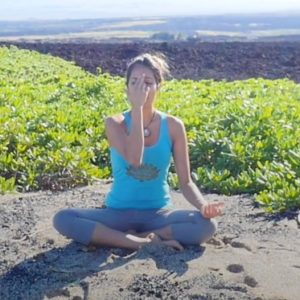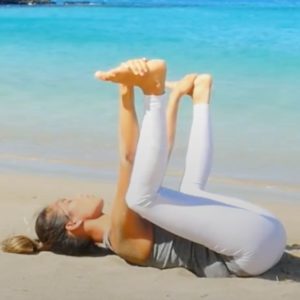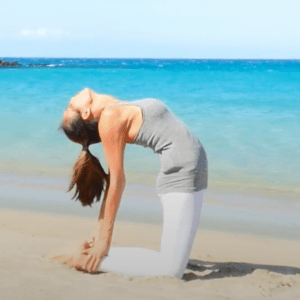Today’s Poses – Child’s Pose and Plow Pose
Child’s Pose and Eagle Pose
Child’s Pose and Plow Pose reduce stress and fatigue and stretch the shoulders and spine. Try these poses with Guided Yoga from YouVeda.
Child’s Pose – Balasana
Balasana is the Sanskrit word for Child’s Pose. Although it is a very simple posture, its effects are profound. The gentle forward-folding motion allows one to tap into deep states of relaxation, as it triggers the rest-and-digest mode of our parasympathetic nervous system. This is why Child’s Pose is often used to open a Yoga class, as a resting posture, or to wind down at the end of a sequence. By allowing us to let go of our egoic identifications, Balasana allows us to connect to our inner child, or Heart center: the part of us that is trusting, pure, and authentic.
Steps
- Sit in Vajrasana: Kneel on the ground with bent legs.
Keep the knees close to each other. Form a bowl with the soles of the feet, by bringing the heels beside the buttocks, while still sitting on them. - Straighten the spine, lift the chest, and slowly bend forward with a straight and elongated spine. Relax downward until the forehead touches the ground. The arms are placed in front of the body with bent elbows and forearms resting on the ground. Alternatively, the hands may be placed alongside the legs with palms facing upward.
- Activate the core muscles, inhale, and slowly lift the torso out of the pose.
Benefits
- Gently stretches the hips, thighs, and ankles.
- Tones the pelvic muscles and the sciatic nerves.
- Releases pressure from the spinal discs.
- Regulates the functioning of the adrenal glands.
- Activates Anahata Chakra, the Heart Chakra.
- Calms the brain and helps relieve stress and fatigue.
- It helps to eliminate anger and is very cooling for the brain.
- Soothes the personality, aids in overcoming the egoic identification.
- Getting in touch with the essence of our being – awakens the soul.
Plow Pose
Halasana or Plough pose is an inverted asana in hatha yoga and modern yoga as exercise. Its variations include Karnapidasana with the knees by the ears, and Supta Konasana with the feet wide apart.
Steps
- Resting flat on your back, place your palms on the mat beside you.
- Inhale, activate your core, and lift your feet off the floor until they’re at a 90-degree angle.
- Support your hips and lower back with your hands as you lift them off the floor.
- Continue to lift as you hinge at the hips and rest your feet directly above your head. Press your toes firmly into the mat beyond your head and energetically press into your heels. Lift your top thighs and tailbone toward the sky and pull your inner thigh into the pelvis.
- Create space between your chin and your chest.
- If you’d like an additional shoulder opener, remove your hands from your lower back, extend them on the mat in the opposite direction, and clasp the hands. Press them down on your mat to lift the hips and thighs even higher.
- To exit slowly and with control, place your hands on your back, hinge at the hips until your feet are high in the sky above your hips (90-degree angle), and slowly roll down vertebra by vertebra.
Benefits
- Calms the brain.
- Stimulates the abdominal organs and the thyroid gland.
- Stretches the shoulders and spine.
- It helps relieve the symptoms of menopause.
- Reduces stress and fatigue.
- Therapeutic for backache, headache, infertility, insomnia, sinusitis.




